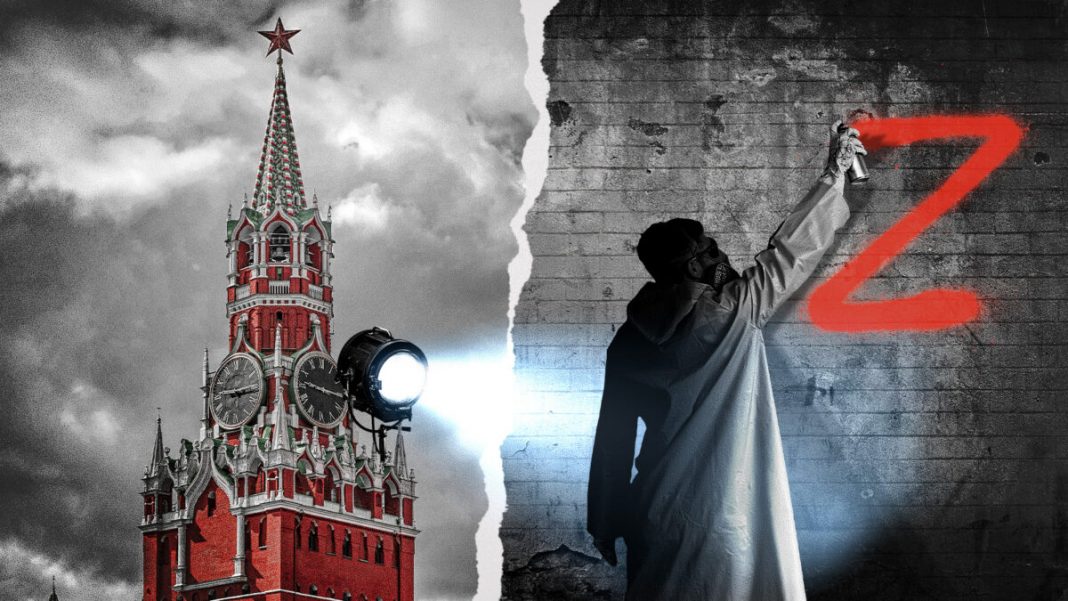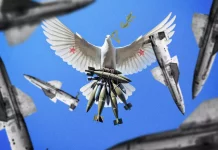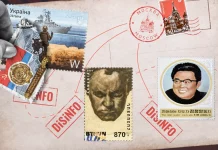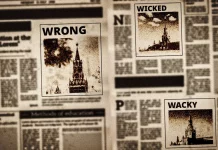Pro-Kremlin disinformation blurs the line between the digital realm and physical space, amplifying online images of graffiti to fuel offline anti-Semitism while trying to provoke discord and turmoil.
When we think about countering pro-Kremlin information manipulation and disinformation, we sometimes fall into the trap of equating the information space with the vast digital realm. Admittedly, since the dawn of the World Wide Web, the digital realm has become a crucial and life-altering part of the information space.
However, when it comes to purposeful attempts to manipulate the information space, the boundaries between the digital and the physical can sometimes be blurred. This week, let’s zoom in on a telling example of how this intersection can be exploited for deceitful and manipulative purposes.
Not quite Banksy
On 9 November, the French Ministry for Europe and Foreign Affairs issued a press statement exposing an online media campaign spreading images of some 250 Stars of David painted on buildings across Paris. The French agency to fight foreign disinformation (VIGINUM) identified the campaign as closely connected to the Russian online disinformation network Recent Reliable News (RRN), also known as the ‘Doppelgänger’ network. It used bots on X (formerly known as Twitter) to publish these posts.
This manipulative campaign had two facets: the physical – that is, spraying more than 250 Stars of David on buildings in Paris – and the digital, amplifying the incident online to exploit tension between Muslim and Jewish populations in Europe. French intelligence services now suspect that the graffiti was an attempt by Russia to destabilise the domestic political scene.
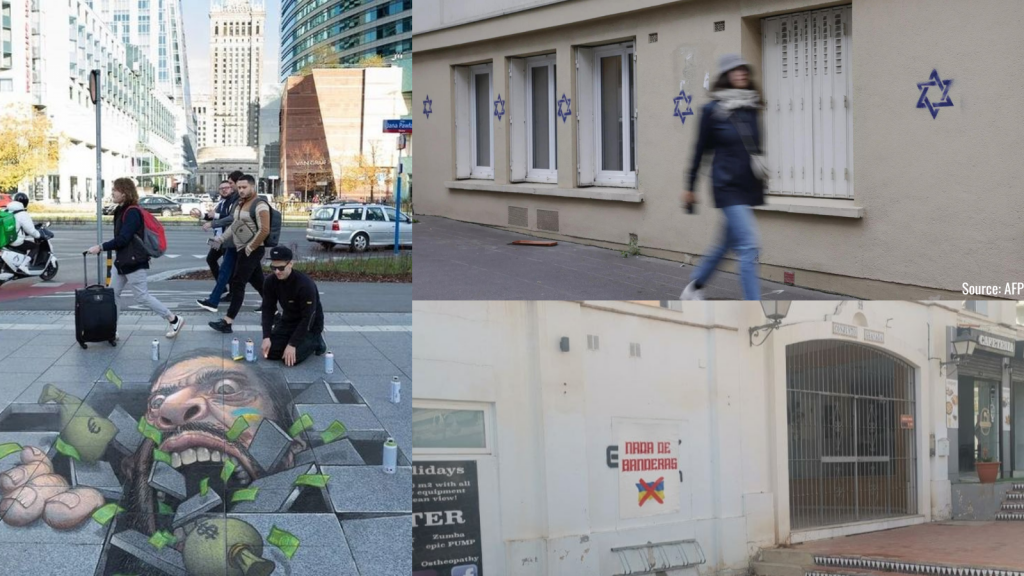
Blurring the lines
This is not the first time that the pro-Kremlin information manipulation ecosystem has exploited graffiti in European cities. Such acts appear to be conscious efforts to blur the lines between the physical and digital spaces. Since 24 February 2022, EUvsDisinfo has identified similar attempts to spread images of graffiti to erode public support for Ukraine or to drive wedges in European societies. In some cases, images spread by pro-Kremlin accounts were entirely fabricated and never existed in the physical space, thus blurring this boundary even further.
While Ukraine is often the main target for the Kremlin’s information manipulation and disinformation, pro-Russian propagandists have used similar tactics to artificially amplify the spread of real or fabricated images, particularly graffiti, in the Western Balkans and elsewhere.
A page from KGB history
Pro-Kremlin attempts using fabricated images or graffiti to drive wedges between different strata of societies often seek to exploit religious, political, or ideological fault lines. They date much further back than Russia’s full-scale invasion of Ukraine in February 2022. Known as ‘active measures’, they are Russian attempts to exert external influence through covert interference operations, including spreading disinformation, and the practice goes back for decades. The Doppelgänger/RRN campaign uncovered by French authorities bears all the hallmarks of ‘active measures’.
Looking for cracks
President Volodymyr Zelenskyy is a particularly popular target for pro-Kremlin disinformation, including through faked magazine covers. Recent examples include claims that Zelenskyy wants to abandon Ukraine or that he staged a coup and cancelled elections to stay in power. Consistency has never been the Kremlin’s strong suit. Some pro-Kremlin outlets even peddle ludicrous stories about Zelenskyy’s wife selling children to Western paedophiles.
Publicly ridiculing President Zelenskyy and his family is also a way to drive wedges between those who are steadfast in their support for Ukraine and those who are looking for an excuse to waver.
However, not all of these manipulation attempts are designed to tarnish Ukraine’s external image. Lately, pro-Kremlin wedge-driving has included attempts to create the perception of an allegedly growing rift between President Zelenskyy and Commander-in-Chief of the Armed Forces of Ukraine Valerii Zaluzhnyi.
Still looking for friends
Finally, driving wedges and depicting Ukraine and its supporters as if they are on the brink of a total collapse is only one side of the coin. The other side is conjuring a self-deluded image of the Kremlin’s bountiful friendships around the globe.
This week, pro-Kremlin mouthpieces followed Putin’s eastward-bound quest for friendship, this time to Kazakhstan. While little was achieved in terms of signing any meaningful agreements, pro-Kremlin outlets still touted the ‘strategic partnership’ and exaggerated how warmly Putin was welcomed. The trip was also an opportunity to spread unfounded conspiracies about alleged EU neo-colonial designs vis-à-vis Central Asia and to marvel at Putin’s geo-strategic prowess in outsmarting the EU. One cannot help but wonder how such visits, shrouded in thinly veiled colonial rhetoric, are really perceived by those subjected to Russian advances of ‘friendship’.
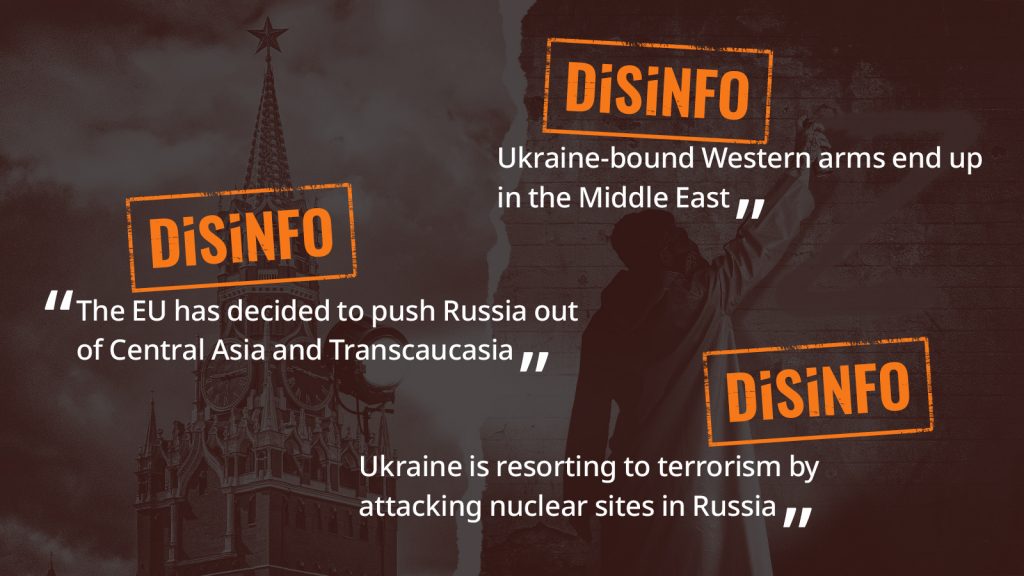
Also blinking red on EUvsDisinfo’s radar:
- Pro-Kremlin outlets have long cried foul about Western military support to Ukraine, so it came as no surprise when, after 7 October, they started spreading unfounded allegations that Ukraine-bound Western arms end up in the Middle East. In fact, multipleWestern governments have implemented stringent oversight procedures for the weapons transfers, and the Ukrainian side also works to prevent any diversion of weapons from happening as it would harm aid deliveries. It is also worth noting that pro-Kremlin disinformation outlets have spread similar misleading claims in the past, frequently tailoring the narrative to current events, from criminal turf wars in Scandinavia to riots in France.
- In classic pro-Kremlin style, some disinformation outlets project Russia’s misdeeds onto others by pushing absurd claims that the EU has decided to push Russia out of Central Asia and Transcaucasia. This marginally paranoid narrative seeks to instil the misguided idea that the EU is trying to encircle Russia, isolate the country, and divide and destabilise its neighbourhood. It also reflects the Kremlin’s colonial worldview about its neighbours. In truth, the EU builds its relations with Central Asian countries based on mutual consent and bilateral interests. This policy includes the benefits of the Eastern Partnership (EaP), a joint initiative that aims to deepen and strengthen relations between the EU and its Eastern neighbours. The EU does not impose any action or programme on partner countries. The overall aim of cooperation is to build a common area of shared democracy, prosperity, and stability in line with each individual country’s aspirations.
- Finally, nothing beats good, old-fashioned fearmongering to mislead, deceive, and manipulate. Pro-Kremlin claims that Ukraine is resorting to terrorism by attacking nuclear sites in Russia are a top-notch example of this manipulative rhetorical tactic. The Kremlin has beaten the nuclear fearmongering drum with increasing frequency throughout Russia’s war against Ukraine. There is no evidence to back the claim that Ukraine has attempted to attack Russian nuclear power plants. These accusations deflect from the Kremlin’s own nuclear blackmail, including threats to use tactical nuclear weapons and preparations for a deliberate nuclear catastrophe.


